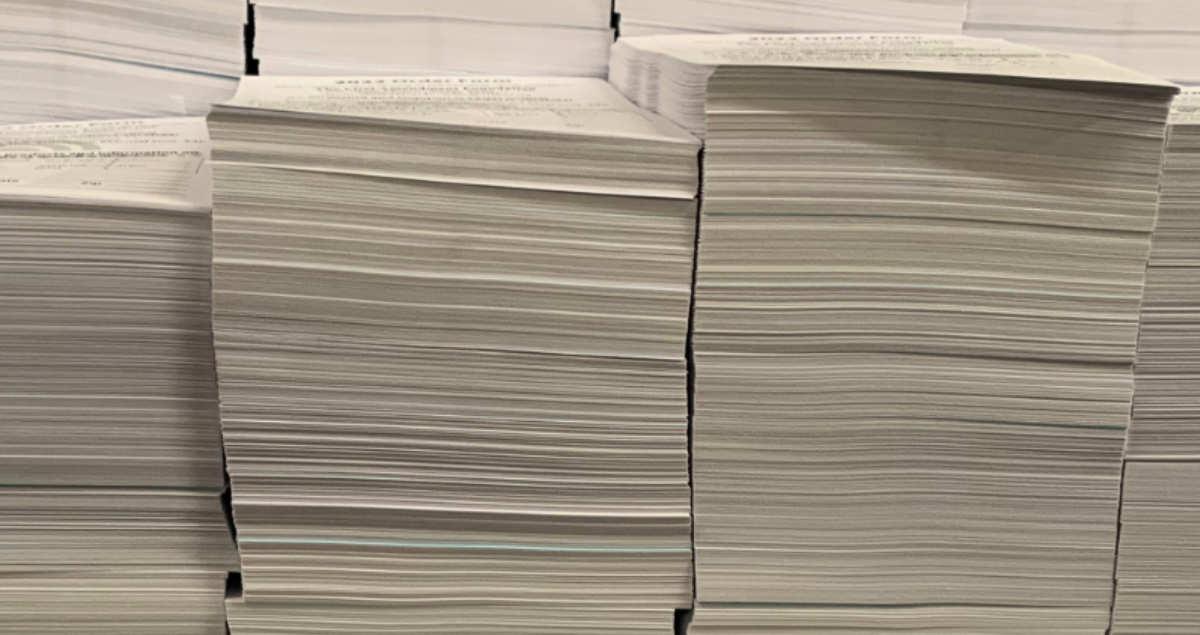
When printing a project, the type of paper you use matters. Depending on what you are creating, you must consider size, weight, texture and more to ensure you create the final product you had in mind. Here’s a quick overview of the types of paper available and when you might use each one.
How do professional printers select paper for a given project? They consider the intended use. How will the item be used? Does it need to be durable? What is the intended look? They must consider details such as color reproduction, image sharpness and surface finish.
For example, when printing pieces that primarily feature text or graphics, most printers will opt for paper with a smooth surface to ensure clear printing and readability. For projects with more detailed images, coated or glossy paper can enhance color reproduction and image sharpness.
To ensure the best fit, most printers will provide samples to help a client assess texture, weight and print quality before making a final decision.
Not sure how to tell the difference between different types of paper? Here are the ones you’ll most commonly find in a professional print shop.
Size note: Paper weight is determined by weighing a ream (500 sheets) of uncut paper and does not represent the weight of each individual page. So, a 20 lb. paper weight refers to a 20lb ream of uncut paper that has not yet been cut into a smaller size for use.
Sizes: Typically available in standard sizes such as letter (8.5″ x 11″) and legal (8.5″ x 14″).
Weights: Usually lightweight, ranging from 16 to 24 lbs.
Texture: Smooth surface suitable for printing text documents, letters and forms.
Sizes: Available in various sizes, including letter, legal, and tabloid (11″ x 17″).
Weights: Varies widely, from lightweight (80 lbs.) to heavy cardstock (100 lbs.).
Texture: Smooth surface with a coating (e.g., gloss, matte, satin) for enhanced color reproduction and image sharpness. Suitable for brochures, flyers and promotional materials.
Sizes: Available in standard sizes as well as larger formats for posters and signage.
Weights: Typically range from around 50 to 100 lbs. for text-weight matte paper used for documents, brochures and flyers. For heavier matte paper used for art prints, posters or specialty projects, weights can range from 100 to 300 lbs. or more.
Texture: Non-glossy surface with a flat finish, suitable for projects where glare is a concern, such as art prints, posters and photographs.
It is also best for writing on with a pen because the ink is absorbed and does not smear as easily.
Sizes: Available in standard sizes as well as larger formats for posters and photography prints.
Weights: Similar to matte paper, with weights ranging from 50 to 100 lbs. for standard printing. Heavier glossy paper for high-quality prints, photographs and posters can range from 100 to 300 lbs. or more.
Texture: Smooth surface with a shiny finish that enhances color vibrancy and image detail. Ideal for photographs, promotional materials and marketing collateral.
Sizes: Available in standard sizes as well as custom sizes for specialty projects.
Weights: Heavier than standard paper, typically ranging from 65 to 110 lbs.
Texture: Sturdy and thick, with a smooth or textured surface depending on the desired effect. Suitable for business cards, invitations, postcards and packaging materials.
Sizes: Similar to standard paper sizes, available in various options.
Weights: Similar to non-recycled counterparts, ranging from lightweight to heavyweight.
Texture: Can vary depending on the manufacturing process, but often has a slightly rougher texture. Suitable for eco-friendly projects, such as business cards, brochures and packaging.
What is the difference between matte and glossy paper? Matte paper has a non-shiny finish with a flat surface, suitable for projects where glare is a concern. Glossy paper has a smooth surface with a shiny finish that enhances color vibrancy and image detail.
What are the benefits of using recycled paper for print projects? Recycled paper is environmentally friendly and can help reduce your carbon footprint. It’s suitable for eco-friendly projects and supports sustainable practices.
Are there specific paper types recommended for special occasions, such as invitations or greeting cards? Yes, cardstock is commonly used for special occasion invitations and greeting cards due to its thickness and sturdiness, providing a premium feel for these types of projects.
Our expert team at Target Print & Mail can help you pick the best options from graphic design to types of paper, so you get a clear return on your investment, every time. Click here to request a quote today.